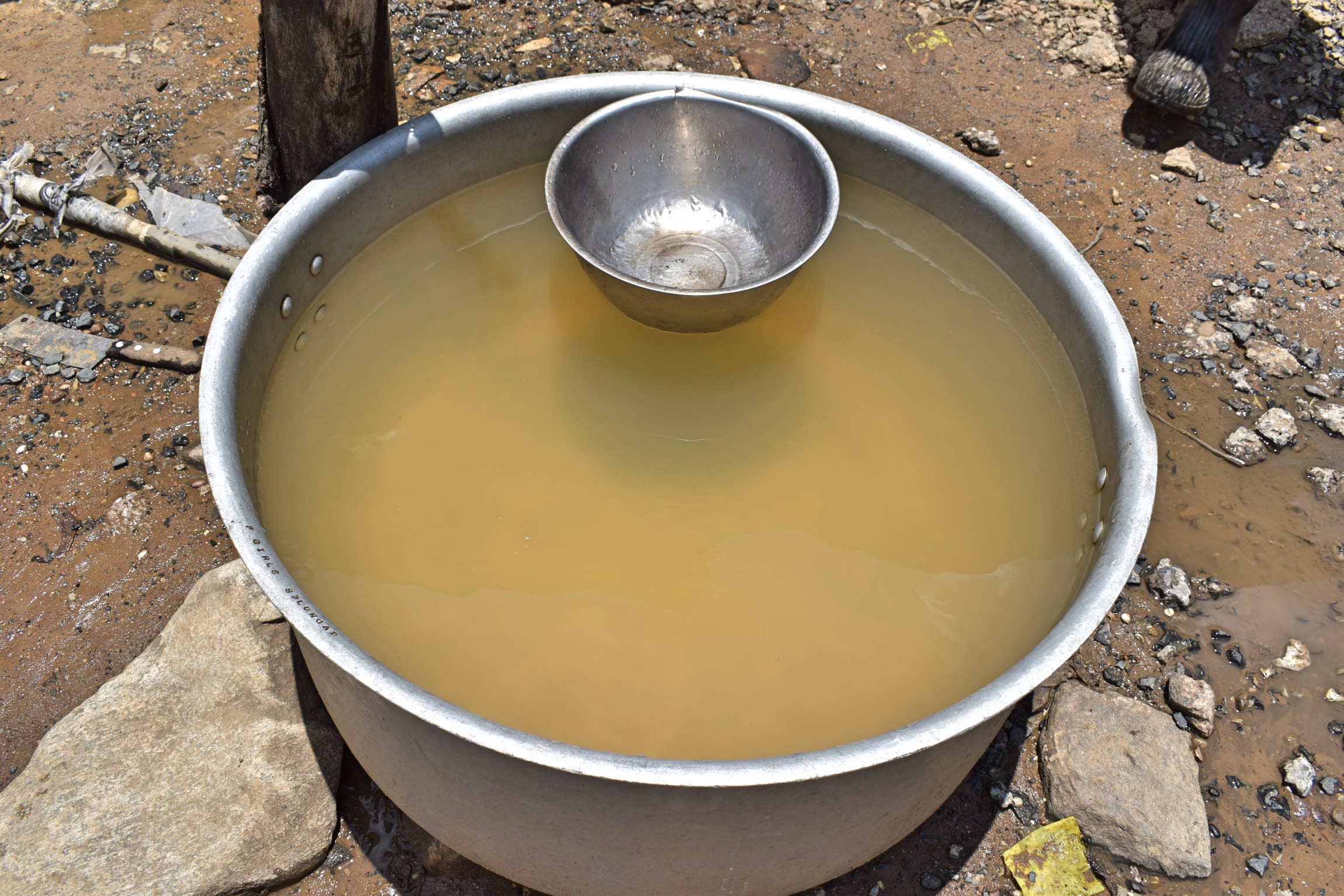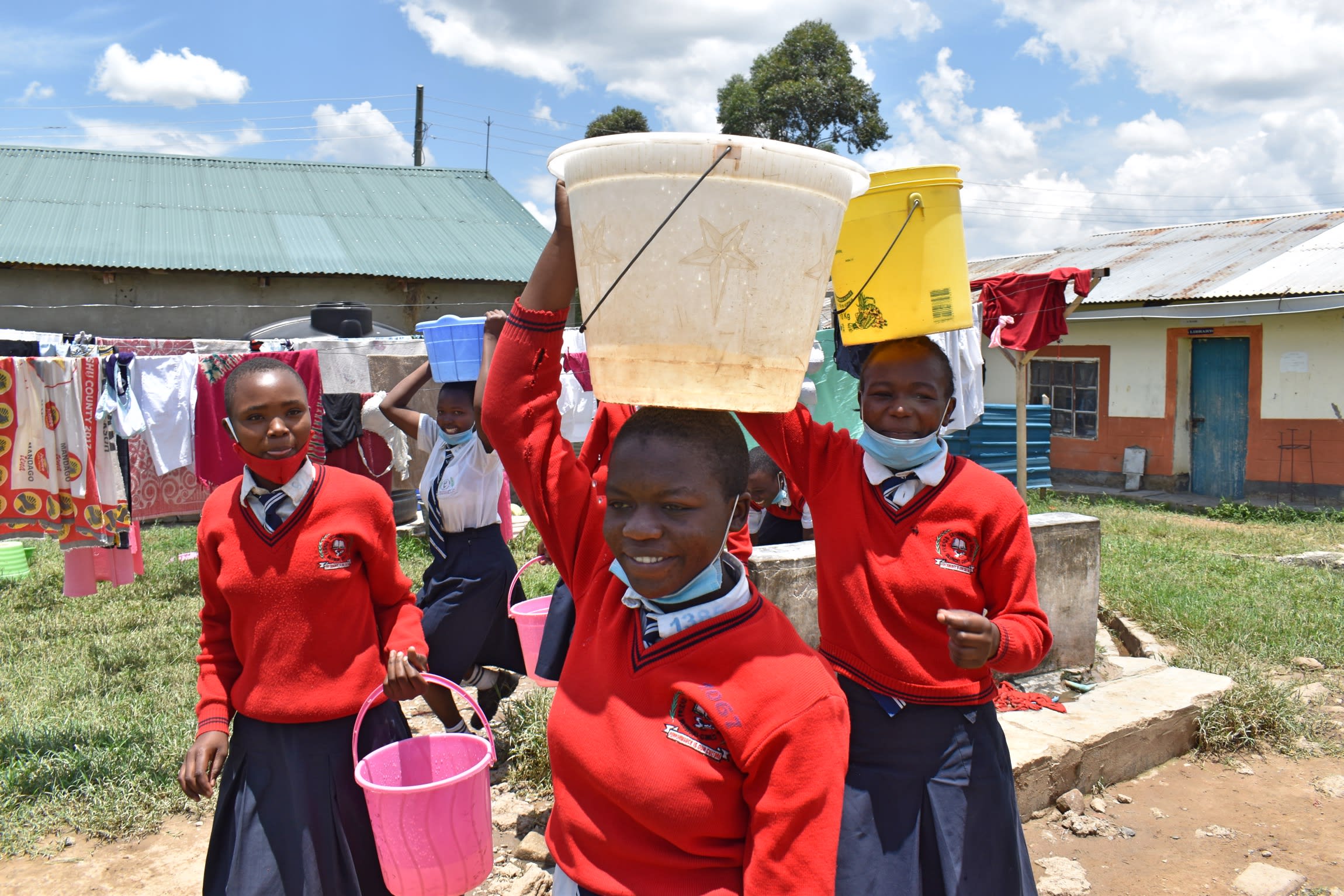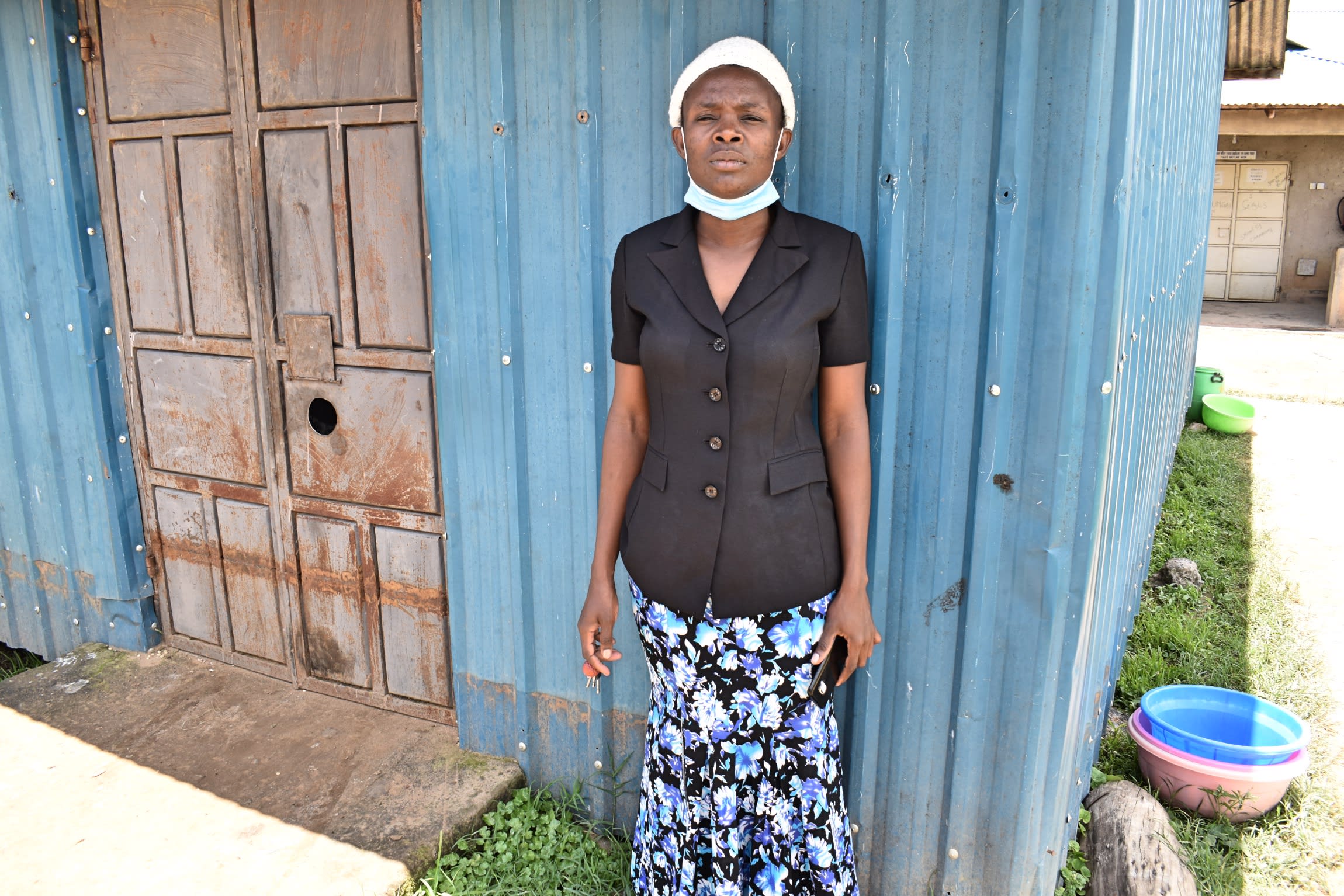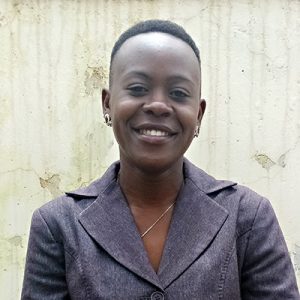Three times a day, Silungai Girls Secondary School staff go down to the river to pump water into the school's reservoir tank. But the water is never enough for the 645 students and staff members, even when the river is flowing freely. When the river dries, the school purchases water from a local vendor.
Neither source yields water fit for human consumption, as can be seen from one of the school's drinking water storage containers shown below.

"I wish we just had an alternative source for drinking water," said 17-year-old student Rachael S. (in the photo below fetching water with her friends with the white bucket on her head). "This current source sometimes scares me to the core, but I can't die of thirst, so [I] am forced to drink it. I wish we just had some clean crystal clear water."

The girls must wash their uniforms using the brown river water which, over time, stains the white an off-white color. They bathe and do their laundry while standing in the river water they must later drink, which causes water-related diseases that are expensive to treat.
Our field officers reported that, even with all the struggle for water and girls going down to the river to fetch water when their reservoir runs dry, the school doesn't even get a quarter of the water it really needs.
As if all this struggle weren't enough, teachers also told us that the students take advantage of the chance while off school grounds collecting water from the river.
"My worry comes in when I have to supervise the girls to fetch water when the pump fails or when the season is dry," said 32-year-old teacher Beatrice Temba (in the below photo).

"They are many and they play tricks on you while on the way to the river. Some may end up getting into trouble with the boys out there or even community members, and [this] means trouble for me as a teacher. It translates to my incompetence, yet that is not the case."
With a reliable water source on school grounds, these girls will be able to live free of water-related diseases and use more time for learning.
What We Can Do:
New Well
We conducted a hydrogeological survey at this school and the results indicated the water table beneath it is an ideal candidate for a borehole well. Due to a borehole well's unique ability to tap into a safe, year-round water column, it will be poised to serve all of the water needs for this school's large population, even through the dry months.
The school will help collect the needed construction materials such as sand, rocks, and water for mixing cement. They will also provide housing and meals for the work team, in addition to providing local laborers. We will complement their materials by providing an expert team of artisans and drilling professionals, tools, hardware, and the hand-pump. Once finished, water from the well will then be used by the school’s students and staff for drinking, handwashing, cooking, cleaning, and much more.
Handwashing Stations
There is currently nowhere for students to wash their hands after using the latrines or before eating lunch, let alone the water to do so.
The student health club will oversee the two new handwashing stations we will provide, and make sure they are kept clean and in working condition. The club leaders will fill the handwashing stations with water daily and make sure they are always supplied with a cleaning agent such as soap or ash.
VIP Latrines
We will construct two triple-door latrine blocks using local materials that the school will help gather. All of these new latrines will have cement floors that are designed to be easy to use and to clean. And with a borehole right on school property, there should be enough water to keep them clean.
Training on Health, Hygiene, COVID-19, and More
We will hold a one-day intensive training session with students, teachers, and parents. This training will cover a wide range of topics including COVID-19 symptoms, transmission routes, and prevention; personal and environmental hygiene; and the operation and maintenance of the borehole, latrines, and handwashing stations. There will be a special emphasis on handwashing.
Our team of facilitators will use a variety of methods to train, including participatory hygiene and sanitation transformation, and asset-based community development. We will initiate a student health club, which will prepare students to lead other pupils into healthy habits at school and at home. We will also lead lectures, group discussions, and provide illustrative handouts to teach health topics and ways to promote good hygiene practices within the school including handwashing and water treatment. We will then conduct a series of follow-up trainings before transitioning to our regularly scheduled support visits throughout the year.
We and the school strongly believe that all of these components will work together to improve standards at this school, which will help lead to better student academic performance and will help unlock the opportunity for these students to live better, healthier lives.

 Borehole Well and Hand Pump
Borehole Well and Hand Pump
 Rehabilitation Project
Rehabilitation Project






































